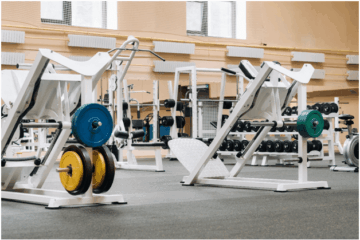In the journey of weight loss, incorporating both aerobic and anaerobic fitness training is pivotal, as each modality offers unique benefits that complement one another, facilitating a holistic approach to achieving a healthier physique.
Aerobic exercises, often referred to as cardio workouts, encompass a wide range of activities such as running, skipping rope, swimming, and cycling. These activities are characterized by their relatively low intensity levels but are sustained over an extended period. The body primarily relies on aerobic respiration to supply energy to the working muscles during these exercises. As the duration of aerobic activity increases, particularly beyond the 30-minute mark, the body shifts towards utilizing a greater proportion of fat as an energy source. This mechanism efficiently burns excess fat stores, thereby playing a crucial role in weight reduction. For instance, committing to jogging 3-5 times per week for durations exceeding 45 minutes can lead to notable weight loss over time. This consistency not only aids in shedding pounds but also enhances cardiovascular health and overall endurance.

On the other hand, anaerobic exercise focuses on strength training, encompassing exercises like weightlifting, push-ups, sit-ups, and squats. Anaerobic workouts are distinguished by their high intensity, short duration, and the requirement for explosive power. The primary objective of anaerobic exercise is to build and tone muscle mass. An increased muscle mass translates to a more active muscle metabolism, which means that even at rest, the body consumes more calories. This elevation in basal metabolic rate (BMR) enables the body to burn more energy throughout the day, facilitating weight management even outside of workout sessions. For instance, engaging in a regimen of dumbbell training may not lead to drastic changes on the scale; however, it will likely result in a reduction in body measurements and a decrease in body fat percentage, contributing to a more toned and sculpted appearance.
For those seeking to lose weight, the most effective strategy often involves a combination of both aerobic and anaerobic exercises. A balanced workout routine might involve performing 20-30 minutes of anaerobic exercise initially to deplete glycogen stores in the muscles. Following this, transitioning into 30-60 minutes of aerobic activity takes advantage of the body’s shifted energy metabolism, encouraging it to tap into fat reserves more efficiently. This synergistic approach not only maximizes calorie expenditure but also promotes muscle growth and improves overall fitness levels.

Moreover, combining these exercise types helps prevent boredom and plateaus, which can be common challenges in weight loss journeys. The variety in workouts keeps the individual motivated and engaged, ensuring long-term adherence to the fitness regimen. Additionally, incorporating adequate rest days and a balanced diet rich in nutrients further supports the weight loss process by allowing the body to recover and repair, while also providing the necessary building blocks for muscle growth and overall health.
In conclusion, the integration of aerobic and anaerobic exercises offers a comprehensive and effective means of achieving weight loss goals. By harnessing the unique benefits of each type of training, individuals can enhance their physical fitness, improve body composition, and ultimately, embark on a sustainable path towards a healthier lifestyle.


